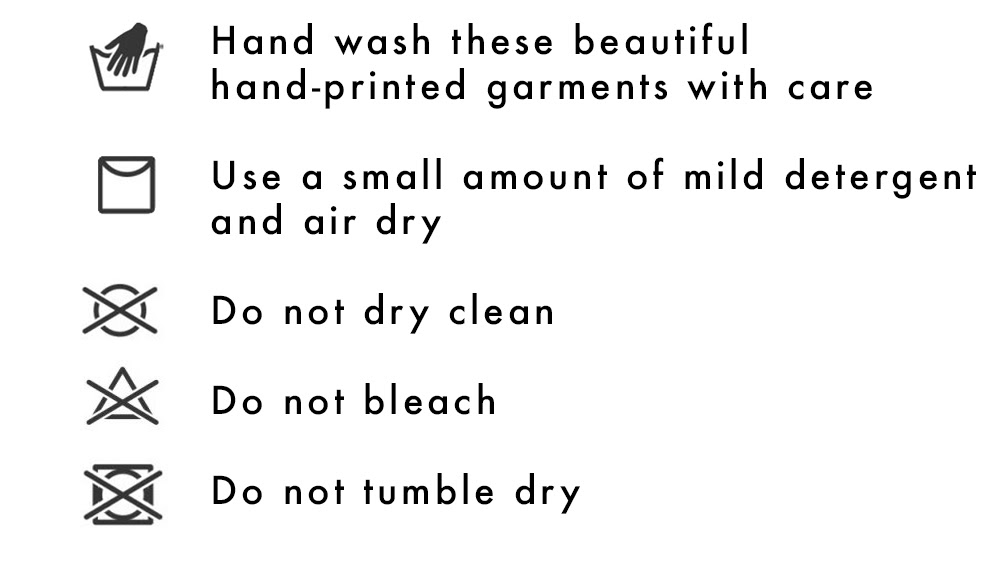How to care for your Collective Closets garment:

Care for your Batik Garments:
Each season, we like to let the tradition and craftsmanship behind our fabrics shine. As a brand built on the rich and dynamic beauty of African culture, it's imperative that we communicate and emphasize this beauty to our audience. Our fabrics play a role as an artisanal craft, a tradition and a means of work for communities around the continent.
As a customer, this means that you know our fabrics are always authentic – and by supporting us, you're doing a part in helping to empower artisans and preserve a traditional art form. This season, we've sourced beautiful wax-resistant, hand-dyed batik from Dakar, Senegal.
With fabrics as special as these, we want you to have the knowledge to care for and preserve your garments for years to come. As Senegalese batik is an artisan-crafted form of textile art, no two pieces are exactly the same. Inconsistencies can depend on the temperature of the wax, pressure the blocks are applied, the precision of the artists, amount of time drying and even mixture of the dyes.*
We've distilled our core care information below, so you can be prepared when our Songa Pamoja collection drops on October 30. We've spent the last few months conducting quality control tests, so we're confident this information will keep your batik beautiful.
You want to remember to wash these fabrics separately to your lighter colours as they are hand-dyed. Try to avoid direct sunlight when drying, do not dry clean and iron inside out. Abrasion can occur in some instances when the fabric is rubbed against coarse surfaces, like straw bags.
*Each garment is unique because of the nature of hand-dyed fabric. Colours and prints will vary.


Care for your Shuka garments:
Our shuka fabric is made in the community of Ruiru, just north of Kenya's capital, where our partners have been weaving it since 1979. The vibrant colours signify bravery, strength and unity; adorning the shoulders of the Masai tribe for generations. Each collection we create is always, at its core, a celebration of the raw beauty behind the shuka textile + the Masai people it represents. This is integral to who we are as a brand, and we hope that with every purchase we can inspire with the story behind the shuka.
Our shuka is an acrylic blend, meaning it has the softness of wool but some added durability and anti-shrinkage properties from the acrylic. Below are some tips to ensure you maximum longevity from your Collective Closets piece.

If using a washing machine, ideally you would wash in cold water on a wool or gentle cycle, using mild detergent or even wool-specific soap (we love the one from Soapclub). Hand washing is a failsafe option- here are some general instructions to help with the process. Because it's a wool blend it is okay to hang out to dry, but if you are concerned it is best to leave the garment to dry flat out of direct sunlight.

Running any comb/brush like these ones (pictured below) over the area should clear off any pilling. Pilling is when tiny balls of fluff form in areas of fabric that experience more abrasion. Seasonal storage is also a great idea if you have a piece you know you won't be needing for a while. A cloth storage bags or plastic bins can prevent